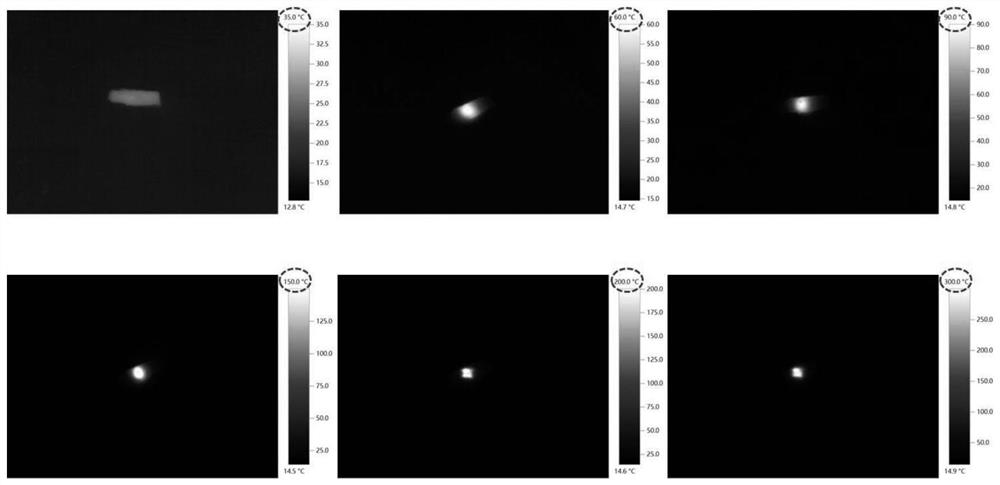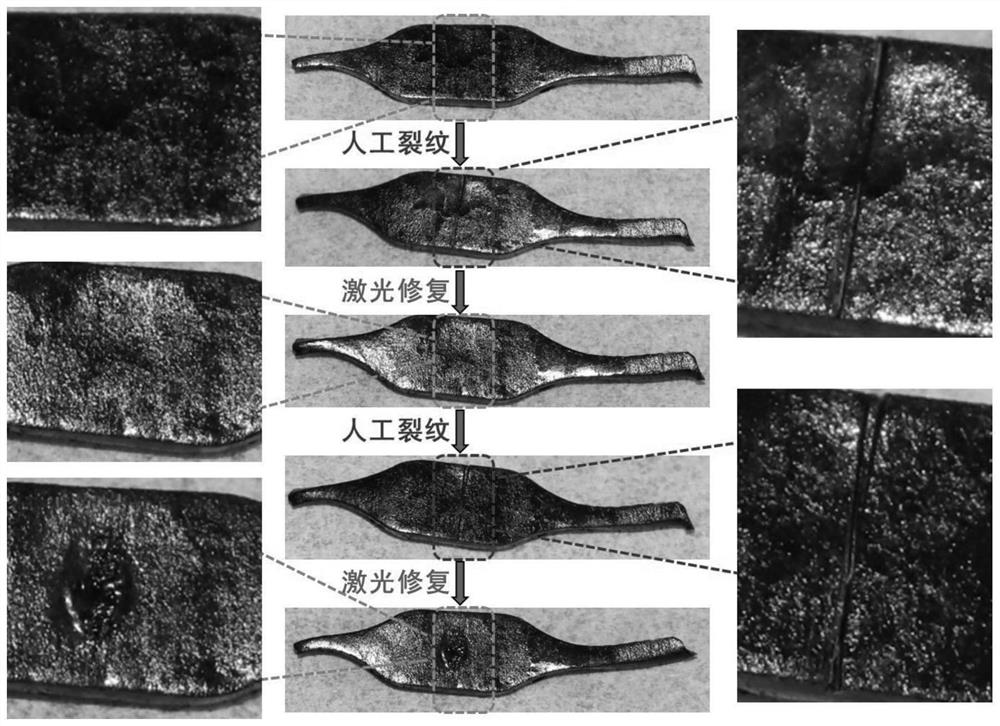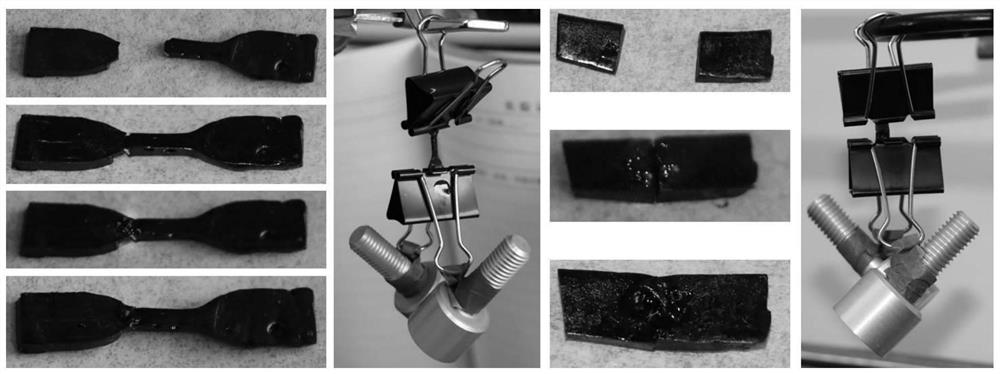Photo-electromagnetic response epoxy glass polymer
An epoxy-based, opto-electromagnetic technology, applied in the field of polymer materials
- Summary
- Abstract
- Description
- Claims
- Application Information
AI Technical Summary
Problems solved by technology
Method used
Image
Examples
Embodiment 1
[0021] The epoxy-type glass polymer (vitrimer) of photoelectromagnetic response of the present invention is made of 50-80 parts of epoxy resin, 20-40 parts of epoxy curing agent, 0 part of epoxy diluent, 5 parts of inorganic Filler and 5 parts of catalyst composition.
[0022] The epoxy resin is bisphenol A diglycidyl ether, the epoxy curing agent is sebacic acid, and the inorganic filler is Fe 3 o 4 Particles, the size of which is 20nm, the catalyst is triazabicyclic.
[0023] The photoelectromagnetic responsive epoxy vitrimer has thermal responsiveness, and can realize crack self-repair, welding and reprocessing at high temperature (100-300° C. and above).
[0024] The photoelectromagnetic response epoxy vitrimer has photoresponsiveness. Under the irradiation of 808nm infrared laser, the temperature of the material rises to 100-300°C and above in a short time, which can realize the self-repair of micro-cracks and show photoresponsiveness.
[0025] The photoelectromagnetic...
Embodiment 2
[0028] The epoxy-type glass macromolecule (vitrimer) of photoelectromagnetic response of the present invention is made of 50-80 parts of epoxy resin, 20-40 parts of epoxy curing agent, 10 parts of epoxy diluent, 5 parts of inorganic Filler and 5 parts of catalyst composition.
[0029] The epoxy resin is bisphenol A diglycidyl ether, the epoxy curing agent is adipic acid, the epoxy diluent is octyl glycidyl ether, and the inorganic filler is Fe 3 o 4 Particles, the size of which is 50nm, the catalyst is zinc acetate.
[0030] The photoelectromagnetic responsive epoxy vitrimer has thermal responsiveness, and can realize crack self-repair, welding and reprocessing at high temperature (100-300° C. and above).
[0031] The photoelectromagnetic response epoxy vitrimer has photoresponsiveness. Under the irradiation of 808nm infrared laser, the temperature of the material rises to 100-300°C and above in a short time, which can realize the self-repair of micro-cracks and show photore...
Embodiment 3
[0035] The epoxy-type glass macromolecule (vitrimer) of photoelectromagnetic response of the present invention consists of 80-100 parts of epoxy resin, 40-60 parts of epoxy curing agent, 10 parts of epoxy diluent, 10 parts of inorganic filler and 0 part catalyst composition;
[0036] The epoxy resin is bisphenol F diglycidyl ether, the epoxy curing agent is 4,4-dithiodibutyric acid, the epoxy diluent is phenyl glycidyl ether, and the inorganic filler for Fe 3 o 4 Particles, the size of which is 50nm.
[0037] The photoelectromagnetic responsive epoxy vitrimer has thermal responsiveness, and can realize crack self-repair, welding and reprocessing at high temperature (100-300° C. and above).
[0038] The photoelectromagnetic response epoxy vitrimer has photoresponsiveness. Under the irradiation of 808nm infrared laser, the temperature of the material rises to 100-300°C and above in a short time, which can realize the self-repair of micro-cracks and show photoresponsiveness.
...
PUM
| Property | Measurement | Unit |
|---|---|---|
| size | aaaaa | aaaaa |
| size | aaaaa | aaaaa |
| size | aaaaa | aaaaa |
Abstract
Description
Claims
Application Information
 Login to View More
Login to View More - R&D
- Intellectual Property
- Life Sciences
- Materials
- Tech Scout
- Unparalleled Data Quality
- Higher Quality Content
- 60% Fewer Hallucinations
Browse by: Latest US Patents, China's latest patents, Technical Efficacy Thesaurus, Application Domain, Technology Topic, Popular Technical Reports.
© 2025 PatSnap. All rights reserved.Legal|Privacy policy|Modern Slavery Act Transparency Statement|Sitemap|About US| Contact US: help@patsnap.com



